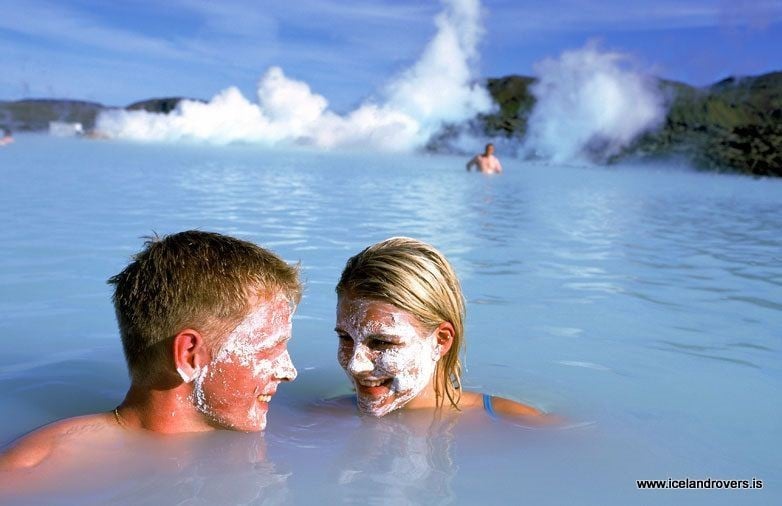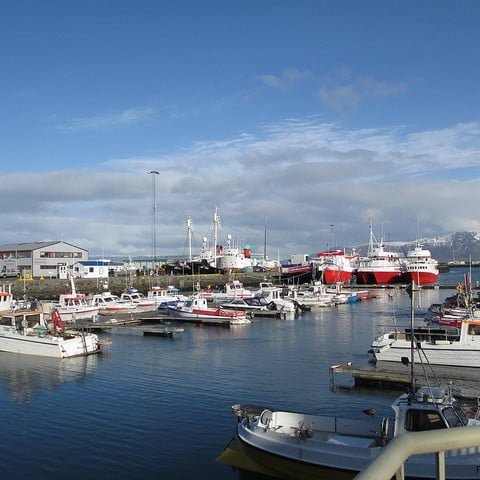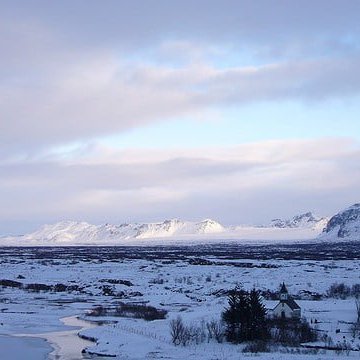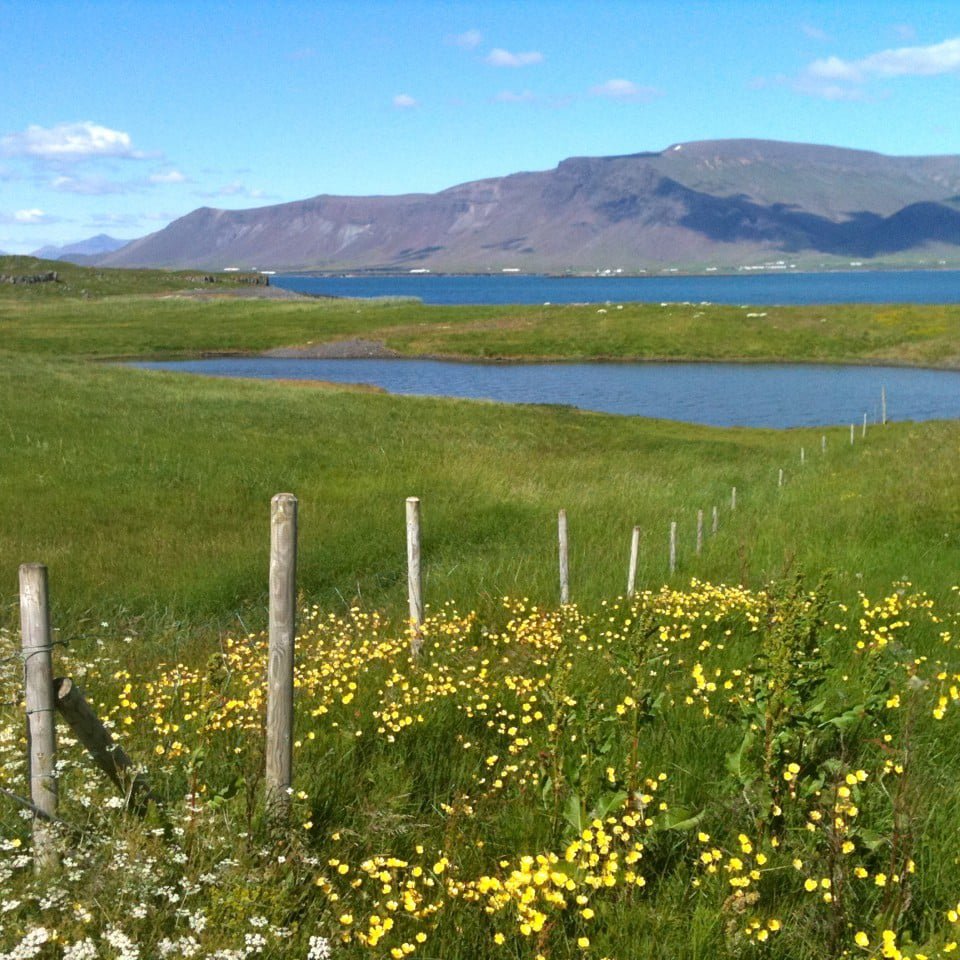Weather in November in Iceland
During the winter, the Land of Fire and Ice is truly a magical place. Witness the snow turn the landscapes white and replenish our nation’s glorious glaciers. Then, indoors, enjoy the warmth and welcome of Iceland’s winter nights.
In this guide, we show you what you can expect from the weather in Iceland in November. Plus, we share some of the top things to get up to throughout the month.
What to expect from the weather in Iceland in November
In November in Iceland, we’re officially in winter. You can expect snow, short days, and low temperatures. Read on for the details.
What are the daylight hours in Iceland in November?
In November, the evenings are closing in, and the darker nights of winter are here. Throughout the month, the days shorten as we approach the winter solstice in December.
In Reykjavík, on November 1, the sun rises at 09:12 and sets at 17:09. It means that at the start of the month, you have just under 8 hours of daylight a day. By the end of the month, on November 30, the sun rises at 10:44 and sets at 15:48. That gives you a little over 5 hours of daylight a day.
In Akureyri, in the northern part of Iceland, the sun rises at 09:07 and sets at 16:43 on November 1, so you’ll have about half an hour less of daylight than in Reykjavík. By November 30, the sun here rises at 10:52 and sets at 15:09, meaning you’ll have just over 4 hours of daylight.
Overall, November is one of the months with the shortest days. However, that does have its benefits. For instance, it gives you much better conditions to experience the northern lights.
What’s the temperature in Iceland in November?
Iceland’s winters can get extremely cold, but the lowest temperatures of the year typically come in January and February. Still, in November, you’ll need to wrap up warm.
In Reykjavík, for instance, you’re looking at average daily temperatures of 2.2°C (36°F). Average highs are 4.7°C (40.5°F) and average lows are –0.1°C (31.8°F). It can get much colder, though—with record lows this month of –15.1°C (4.8°F).
In comparison, Akureyri is generally colder during this period. The daily average temperature is 0.6°C (33.1°F), with average highs of 3.6°C (38.5°F) and average lows of –2.1°C (28.2°F). Again, though, it can get much colder, with temperatures having reached –18.5°C (1.3°F).
Remember that cities and towns generally tend to be warmer than rural areas. So, if you’re heading into the outdoors, you can expect lower temperatures overall.
How much rain does Iceland get in November?
Aside from being quite cold, November in Iceland tends to be also pretty wet. Yet, for most of the month, much of the precipitation falls as snow.
Again, to take Reykjavík as an example, the city experiences 86.5mm (3.41 inches) of rain throughout the month. This typically falls on 13.7 days (i.e. nearly every other day). November also brings roughly five days of snow in the Icelandic capital.
Head north, and it tends to be drier. November sees an average of 68.3mm (2.69 ins) of rain in Akureyri, falling over an average of 10.9 days. This month, there are 12.4 days when the city gets over a centimetre of snow too.
What to do in Iceland in November to make the most of the winter weather
With a lot of rain and low temperatures, November may not sound like the most appealing time to visit Iceland. But believe us when we say this month has its charms.
Whether it’s sunny or snowing, there’s plenty to enjoy in Iceland. Here are some of our favourite ideas.
1. Hunt the northern lights
Iceland is deservedly known as one of the best places in the world to see the northern lights. You can witness them throughout the winter season—from October to April—but the darker the skies, the better.
That means November is the perfect time for an Icelandic northern lights display. With the sun setting from as early as 16:00 this month, you’ll have plenty of opportunity to glimpse this magical spectacle—without having to stay up all night.
All you’ll need is clear skies and a location free of light pollution. That means somewhere out of the city is best. You can use a tool such as Aurora Forecast to identify the locations where conditions are optimal.
Alternatively, book a northern lights tour to be guided to the best spots in the country to see this otherworldly display.
2. Attend an Icelandic festival or event
While Iceland’s population may be small, the country’s cultural calendar is packed—even in November. Whenever you’re visiting Iceland, make time to see an authentic local event.
One of the biggest events this month is Iceland Airwaves. One of the best-known music festivals in the entire country, it welcomes major international and local acts to Reykjavík in early November. Plus, events take place in venues across the city, giving you a glimpse of places few other visitors get to see.
Later in the month (on November 16) is the so-called Icelandic Language Day. It’s a day that celebrates the language, with everyone encouraged to speak only in the local tongue. You can also expect many cultural events across the city.
Of course, by the end of the month, Christmas is on the horizon. Look out for the first signs of the festive season as you explore Iceland throughout November.
Whatever you’re interested in, you can trust that much more is happening beyond the major annual events. Check out the listings of local venues, such as the Harpa Concert Hall, to discover an event for you.
3. Visit the outdoors in winter
In winter, the landscapes of Iceland become dusted in snow. For many, in fact, it’s the season when the Land of Fire and Ice is at its most beautiful.
A trip to Iceland in November wouldn't be complete without an outdoor adventure. Whether it's hiking or horse riding, there's something for everyone to enjoy.
For instance, November can be an ideal month to venture onto one of Iceland’s glaciers. Join a guided group (or hire a private guide) and hike across these icy expanses. Alternatively, you can explore the country’s ice caps on a snowmobile or super jeep—or even visit the caves and tunnels beneath the ice.
Iceland’s coasts and black-sand beaches are beautiful at this time of year too. For example, take a drive along the south coast—or head to the magical Snæfellsnes peninsula for a taste of “Iceland in miniature”.
4. Unwind in an Icelandic spa
Of course, whatever the weather is doing, make time to relax on your trip to Iceland. The perfect place to do this is in one of the country’s world-famous spas.
The Blue Lagoon—a milky-blue pool warmed by geothermal power—should be high on your list of spa destinations to visit. Or there’s Sky Lagoon, where you can bathe in an infinity pool that overlooks the North Atlantic Ocean. (Trust us, it’s an incredible experience even when the weather is not as good as one might hope!)
If you want to unwind in a more rugged natural setting, head to Reykjadalur Valley, where you can bathe in a naturally warm river. Or visit Hvammsvík, on the banks of the scenic Hvalfjörður.
For something more intimate, you can alternatively book a hotel with a private spa. At Berjaya, many of our hotels have world-class spa facilities. They’re the perfect places to kick back after a day of sightseeing.
Tips to enjoy November weather to the fullest
November brings low temperatures, rain, and some of the first major snows of the season. To enjoy your visit this month, it’s worth bearing some words of advice in mind.
Here are four tips to ensure you have an unforgettable, comfortable, and safe trip.
- Plan around the weather forecast. A November day in Iceland can bring sunshine, rain, snow, and sometimes all three. Of course, this can affect your driving conditions, outdoor adventures, and much more. Your best friend for accurate forecasts is the Icelandic Met Office, so you know exactly what to expect.
- Pack for all kinds of weather. The best idea is to dress in layers so you can throw an extra layer on if you get cold and take it off again if temperatures rise. Of course, a warm, waterproof jacket and sturdy shoes suitable for the outdoors are a must.
- Come prepared to improve your chances to see the northern lights. Tools like Aurora Forecast provide all the information you need to see the aurora borealis—including cloud cover, solar activity, and more. Alternatively, you can join a northern lights tour, and your guide will take you to the best places in the area.
- Check road conditions before you travel. In November, you won’t be able to access highland roads at all, while smaller unpaved roads may not be passable if there’s been heavy snow. Visit road.is for up-to-date information on road conditions.
Quick summary: Why November is a great time to visit Iceland
While the weather is not always the best in November, it’s still a great month to visit Iceland. Expect local events, fewer crowds, and the chance to see the northern lights.
At Berjaya, we’re committed to making your stay unforgettable, no matter the season you visit. Check out our range of hotels, spas, and restaurants to start planning your trip.
FAQs
Is November a good time to visit Iceland?
November is a great time to visit Iceland. While the weather is changeable, winter is one of the best times of the year. Expect snow-covered landscapes, the northern lights, and fewer crowds than in other seasons.
What’s Iceland’s weather like in November?
In November, Iceland’s weather is very changeable. While there’s a good chance of rain, it tends to fall on fewer than half of the days in the month. Otherwise, you can expect sunshine and snow. Of course, temperatures tend to be pretty wintry, so wrap up warm.
What to do in Iceland in November?
There’s lots to do in Iceland in November:
- Tour the country’s glaciers
- Dive into the local music scene at Iceland Airwaves
- A glimpse of the Northern Lights
- Visit the Icelandic outdoors in its winter coat.
Can you see the northern lights in Iceland in November?
November is an ideal time to see the northern lights in Iceland. Throughout the month, there are many hours of darkness, giving you the best chance to see the aurora borealis.
Of course, there’s no guarantee that you’ll see the aurora. But November gives you one of the best chances of any month of the year.
How should I dress for the weather in Iceland in November?
Iceland’s weather in November is very changeable, so you should be prepared for everything. That means a waterproof jacket and sturdy shoes are a must. But it also means it’s smart to dress in layers—so you can put one on or take one off depending on the temperature.
Is it common to experience rain in November in Iceland?
Icelandic winters tend to experience a lot of precipitation, falling as both rain and snow. Typically, in Reykjavík, you can expect rain on an average of 15 days throughout the month—or one in every two days.
Are there any specific weather-related travel advisories for Iceland in November?
Travelling around Iceland in November is straightforward enough. However, in the winter—more than in other seasons—the weather can be a complicating factor. For instance, it can be challenging to drive long distances in the middle of a winter storm.
So, always check the forecast and the road conditions before you travel. The Icelandic Met Office and road.is are your best resources.
Can I go glacier hiking in Iceland in November?
November is a good time to go glacier hiking. However, you’ll need to check the weather before you join a guided group. In a whiteout or in heavy rain, it won’t be much fun.
Please don’t try to hike on glaciers without a guide. It can be very dangerous.
Is November a good time for whale watching in Iceland?
Typically, the best season for whale watching in Iceland is the summer. During this season, many species of whales make Icelandic waters their home.
That said, there are still many opportunities to see whales and dolphins in Iceland in the winter. For instance, orcas, humpbacks, and minke whales can all still be seen in Icelandic waters in the colder season.
How do the weather conditions in November affect driving in Iceland?
It’s really important to check road conditions before driving in winter in Iceland. Use road.is to ensure that any roads you want to use will be open.
During the winter, roads can be covered in snow, and not all of them will be cleared. It’s particularly true in the highlands. This is a region that’s not accessible at all in the winter.
If you’re hiring a car, make sure it’s equipped with winter tyres and snow chains.
Are outdoor activities like hiking and hot springs recommended in November?
Heading out into the countryside is a must in Iceland in this season. You’ll discover pristine snow-covered landscapes and hardly any other visitors to obstruct the view.
What we would say is that it’s really important to check the weather before you head out for an outdoor adventure. If the weather changes and you’re not prepared, it can be very dangerous.
What’s the best way to stay up to date on the weather in Iceland in November?
The best tool you can use to stay up to date on Iceland’s weather is the website of the Icelandic Met Office. It provides the most reliable weather forecasts for all times of year.






